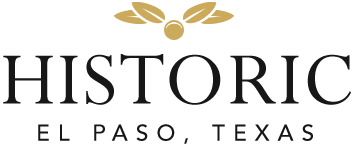Silvestre Terrazas,the social outcast of the Terrazas clan, published the newspaper La Patria from this site from 1919 to 1925. La Patria voiced Silvestre Terrazas’s pro-Villista viewpoint and allowed its exposition to numerous residents in Mexico, as well as the borderlands. Initially, Silvestre Terrazas was exhiled from Mexico for voicing his views against Porfirio Diaz in a publication entitled El Correo de Chihuahua. Between 1913 and 1915, when Francisco “Pancho” Villa controlled Chihuahua, Silvestre Terrazas assisted his administration. Silvestre Terrazas was considered an “enemy of the state” by Porfirio Diaz; he acquisitioned arms and munitions for Villa, and negotiated with Venustiano Carranza for Villa (Romo, Ringside Seat, 271). Terrazas published La Patria at the rear of the building. He also lived at 830 N. Oregon St. In 1919, La Patria was “considered to be the ‘official’ villista organ in El Paso” (Harris & Saddler, 361).
Villistas and carrancistas were locked in conflict. La Patria served as an instrument of villista agency. Prominent villistas formed the Mexican Liberal Alliance (Alianza Liberal Mexicana, or ALM). At the national level, General Felipe Angeles and General Antonio Villarreal, among others led the Mexican Liberal Party. Jesus Flores Magón was a member. The Mexican Liberal Alliance had a chapter in El Paso. Its “executive committee consisted of Manuel Bonilla, General Federico Cervantes, General Macrino Martinez , Manuel Baca Ronquillo, G. Mendez Velarde, Eduardo Angeles, and Manuel David Camarena—villistas predominated” (Harris & Sadler, 355, 361). Villa endorsed the Mexican Liberal Alliance’s manifesto, which was called the Plan de Rio Florida. The manifesto was modeled upon the principles of Mexico’s 1857 Constitution. In the manifesto, Felipe Angeles declared himself as the leader of the Liberal Alliance, Villa as its cavalry commander. Public opinion viewed Villa as the real leader. As such, a “Villista-Angelista” movement emerged within the Mexican Liberal Alliance. La Patria published various articles promoting the ALM cause. But leaned towards the agenda of Felipe Angeles and the ALM. Consequently, a power struggle ensued and members of the Angelista faction of the ALM plotted an attack against Villa. They were intercepted by American officials in Socorro on March 18, 1919 (Harris & Saddler, 355-359). La Patria published an article that was written by Federico Cervantes, one of the main participants in the plot against Villa, and “launched a petition drive to obtain clemency for Cervantes and his companions” (Harris & Sadler, 361). Between June 11 and June 17, 1919, Villa attacked Juarez and was repulsed by U.S. forces. In the aftermath of the last battle of Juarez, Silvestre Terrazas, editor and owner of La Patria, joined a newly formed organization called the Mexican Peace Committee, which, in large, was made up of supporters of the villista movement. By September of 1919, Carranza’s forces controlled Juarez, but the fading villista faction in El Paso “tried to form a national opposition movement composed of all dissident factions to work against the Carranza regime.” Silvestre Terrazas attended the meeting (Harris & Saddler, 368, 372). At that time, many carrancistas also supported Villa. Harris and Sadler point out that “to counter the efforts of their political enemies, Carranza established a newspaper, El Nacional” (373). From this information we can deduce that, during 1919, Silvestre Terrazas supported Villa and Felipe Angeles, and probably would have liked to see these revolutionary factions unite.

